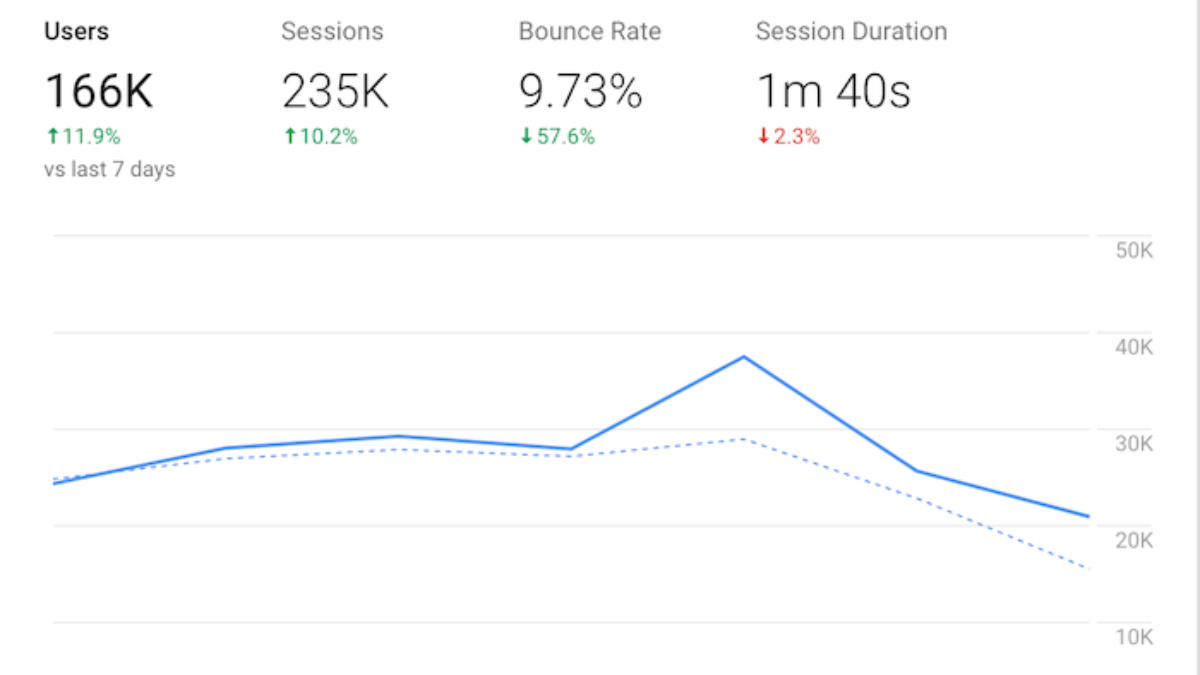Grasping the Art of Making Use Of Data With Advanced Google Analytics Methods
The key lies in understanding the art of utilizing data through sophisticated approaches that go beyond surface-level evaluation. What absolutely establishes apart the professionals in this area is their capacity to flawlessly integrate Google Tag Manager into the mix, enabling enhanced tracking capacities that redefine the borders of information use in the electronic landscape.
Recognizing Complex Google Analytics Reports

One important facet of understanding complicated Google Analytics reports is identifying and analyzing vital efficiency signs (KPIs) KPIs specify metrics that align with the goals of an organization or website. By concentrating on pertinent KPIs, such as conversion rates, bounce prices, and typical session duration, experts can gain a much deeper understanding of exactly how individuals connect with the website and where improvements can be made.
Moreover, delving into division within Google Analytics reports allows for a more granular evaluation of data. By segmenting data based upon various variables such as demographics, website traffic resources, or individual actions, experts can discover patterns and fads that may not appear when looking at the information as a whole. This thorough analysis can supply useful understandings for maximizing advertising and marketing approaches, boosting customer experience, and inevitably attaining service purposes.
Leveraging Custom-made Capacities and Metrics
Discovering the utilization of customized measurements and metrics can considerably improve the deepness of evaluation in Google Analytics. Custom-made dimensions allow for the development of additional data factors to segment and analyze details past the default dimensions supplied by Google Analytics. By specifying customized dimensions, such as customer attributes or session details certain to your website, you can get important insights into customer habits and communications.
On the other hand, custom metrics make it possible for the monitoring of distinct information points that are not covered by the typical metrics in Google Analytics. This modification empowers you to tailor your analytics to suit your business goals better. By incorporating personalized metrics like scroll depth, video clip engagement, or details occasion interactions, you can measure and review efficiency metrics that are crucial to your site's success.
Executing Advanced Information Segmentation Techniques
Using sophisticated data division strategies boosts the precision of analysis in Google Analytics, enabling targeted understandings right into customer behavior and performance metrics. By segmenting information efficiently, marketing experts can identify details user teams based on numerous requirements such as demographics, habits, or acquisition networks. This segmentation enables a much deeper understanding of how different sections connect with a web site or application, causing even more educated decision-making procedures.
Advanced data division techniques in Google Analytics go beyond standard segmentation by incorporating custom-made dimensions, metrics, and progressed filtering system options. Marketers can produce sections based on a check over here combination of specifications, enabling for very details and customized analysis. For instance, segmenting customers who have made a purchase and went to a certain page can supply insights into the efficiency of advertising projects in driving conversions.
In addition, advanced segments can be used to various reports within Google Analytics, supplying a thorough sight of fractional information throughout different dimensions (when does the tracking code send an event hit to google analytics?). This alternative approach to data segmentation empowers marketing professionals to discover hidden patterns, determine opportunities about his for optimization, and inevitably enhance the general performance of their electronic residential or commercial properties
Making Use Of Information Visualization Equipment Properly
Reliable utilization of information visualization devices is crucial for changing intricate data sets into actionable insights for notified decision-making in digital analytics. Information visualization tools, such as Google Data Studio, Tableau, or Power BI, play a vital function in simplifying the analysis of vast amounts of information. By aesthetically representing information through charts, charts, and interactive control panels, these devices make it possible for experts to determine patterns, patterns, and connections that might not appear in raw data.

Grasping Google Tag Manager for Improved Tracking
Making the most of the capacity of Google Tag Supervisor is important for enhancing monitoring capabilities and improving information collection accuracy in electronic analytics (when does the tracking code send an event hit to google analytics?). Google Tag Manager (GTM) serves as a powerful device that simplifies the procedure of handling tags, triggers, and variables on a web site without needing hands-on code modifications. By grasping GTM, electronic marketing professionals can effectively carry out and upgrade numerous monitoring codes, such as webpage Google Analytics, Facebook Pixel, or custom-made occasion monitoring, to gather important data on customer habits and communications
Via GTM's straightforward user interface, professionals can set up causes to track specific customer actions, like type entries or button clicks, and define variables to capture appropriate data factors, such as customer IDs or page URLs. By mastering Google Tag Supervisor, businesses can improve their monitoring abilities, boost data accuracy, and ultimately make even more educated choices based on dependable analytics insights.
Final Thought
In final thought, mastering sophisticated Google Analytics methods is necessary for businesses to properly use information for decision-making. In addition, grasping Google Tag Manager permits for improved monitoring and customization of data collection.
By segmenting information based on different aspects such as demographics, website traffic resources, or user behavior, experts can reveal patterns and fads that may not be noticeable when looking at the information as a whole.Effective usage of information visualization devices is important for changing intricate data sets right into actionable insights for educated decision-making in digital analytics. Data visualization tools, such as Google Data Studio, Tableau, or Power BI, play a critical duty in simplifying the interpretation of vast quantities of information.When using information visualization devices, it is crucial to select the most suitable visualization type based on the nature of the data and the understandings being looked for - when does the tracking code send an event hit to google analytics?. By mastering the art of making use of information visualization devices efficiently, analysts can unlock the full capacity of their information to drive critical decision-making and achieve organization goals